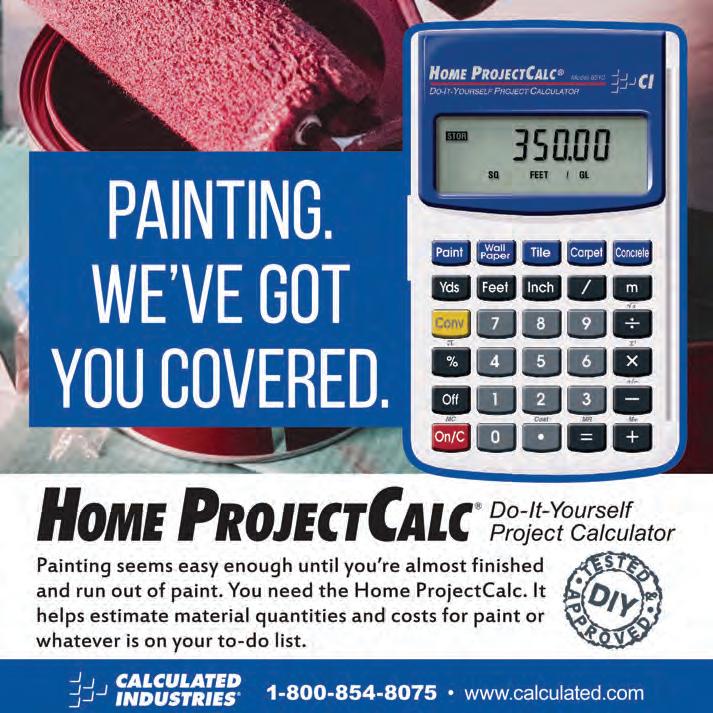
18 minute read
START SMART
>STARTSMART
10 HOT PRODUCTS FOR KITCHEN & BATH

1 WILSONART THINSCAPE PERFORMANCE TOPS
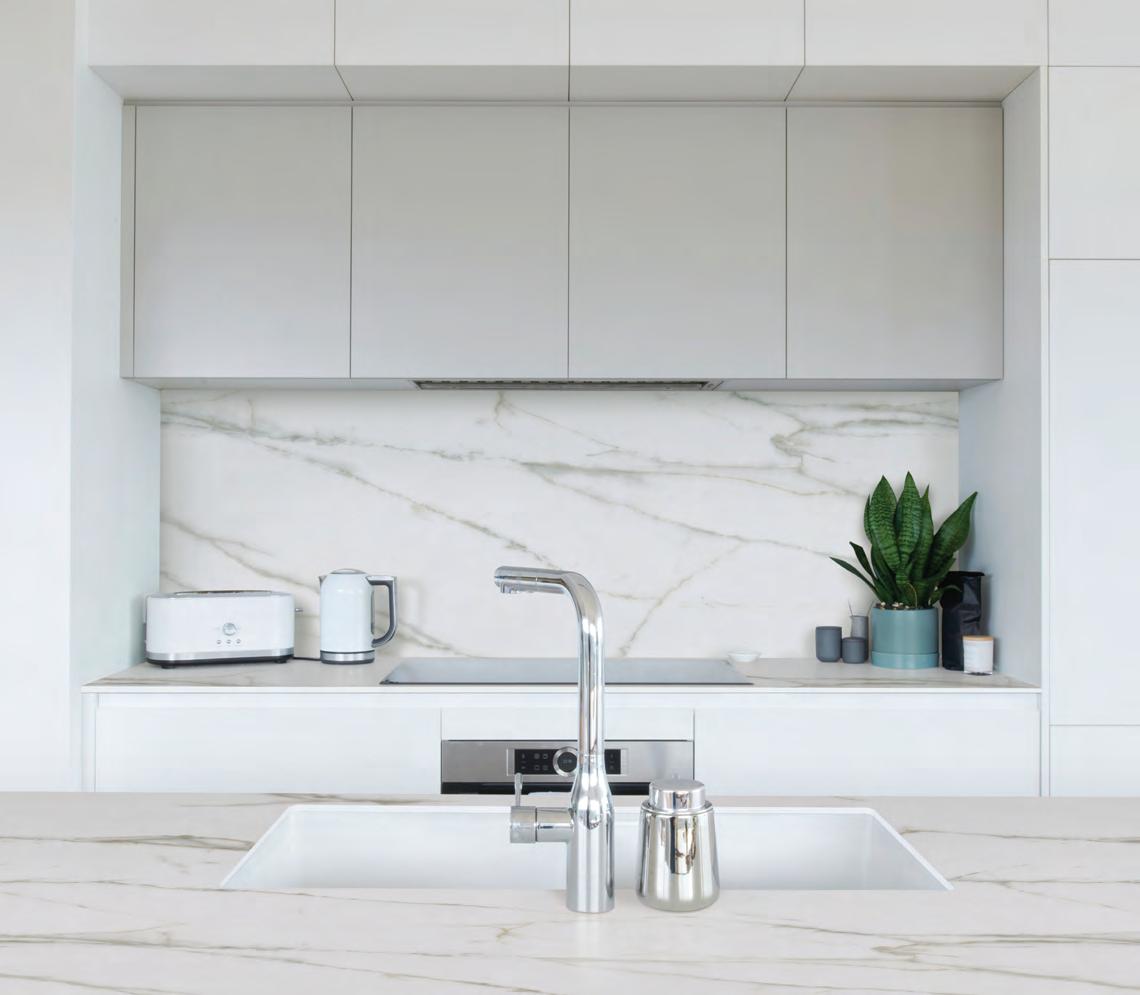
MFG: Wilsonart WEB: www.wilsonart.com INFO: Wilsonart ThinScape Performance Tops are European-inspired, ultra-thin countertops which offer a minimalist style that pairs well with modern spaces. The ultra-thin tops offer exceptional durability with resistance to impact, scratches and moisture, and are ideal for kitchen countertops, bath vanities, and laundry room worktops. Manufactured in the USA, ThinScape Performance Tops also come with UL GREENGUARD Gold Certification for indoor air quality and can be found at kitchen and bath dealers and local fabricators nationwide.
2 REV-A-SHELF UNIVERSAL WASTE PULLOUT
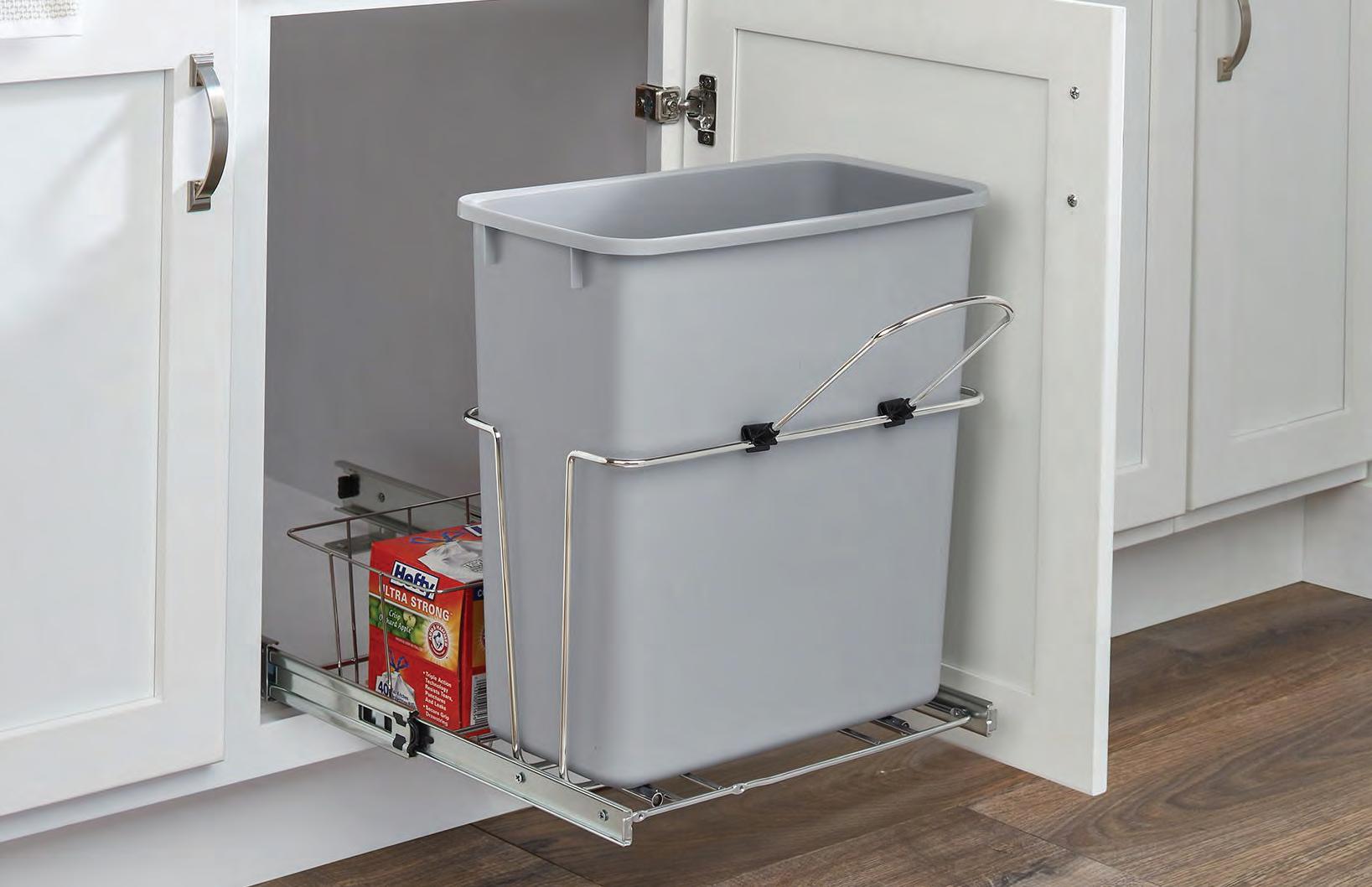
MFG: Rev-A-Shelf WEB: rev-a-shelf.com INFO: Perfect for tight spaces like vanities, laundry rooms and kitchens, Rev-A-Shelf's Universal RU units clear your kitchen of trash by hiding it inside your cabinet. The universal frame accommodates 27-, 30- and 33-in. sink base cabinets. Simply by turning it in either direction, you can avoid plumbing and other obstructions. The pullout is made from a chrome-plated welded wire frame with full-extension, ball-bearing, 100 lb.-rated slides. The unit simply mounts to the cabinet floor with four screws.
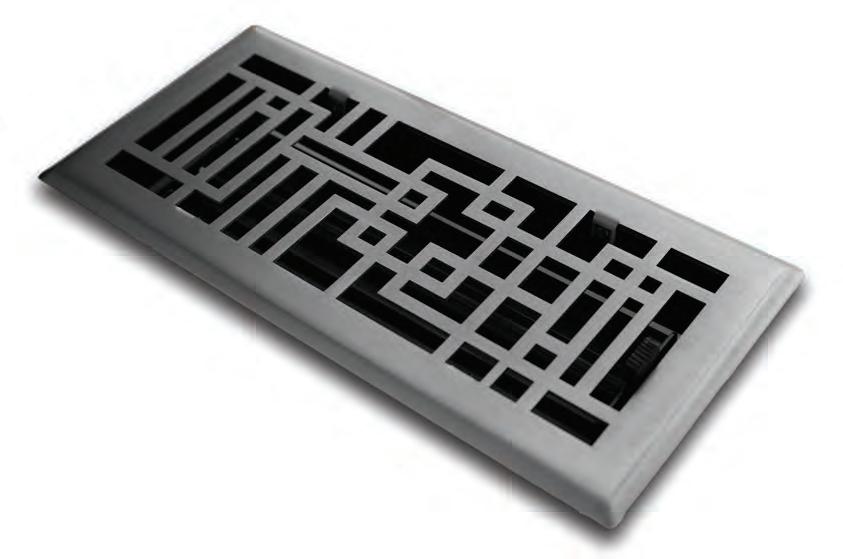
3 MADELYN CARTER VENT COVERS
MFG: Madelyn Carter WEB: ventcoversunlimited.com INFO: Combining quality materials and innovative design, these artistic vent covers lend a classic look to any space. Available in a wide range of designs, they include sturdy adjustable dampers and a long-lasting finish. With a steel interior and heavy-duty metal dampers, these floor registers boast strength and longevity. You can use the vent covers in high-traffic areas of your home without worrying about dents or scratches from shoes or furniture.
4 SMART TILES
MFG: The Smart Tiles WEB: www.thesmarttiles.com INFO: Simplify backsplash installation with these innovative peel-and-stick wall tiles, specially designed for kitchen and bathroom backsplash areas. No more messy, time-consuming and nerve-wracking tile installations with grout or glue. Effortless DIY, easy-to-follow instructions are included for a clean and dust-free installation. Once Smart Tiles have completely adhered to the surface, generally after 48 hours, they’re guaranteed to stay in place.
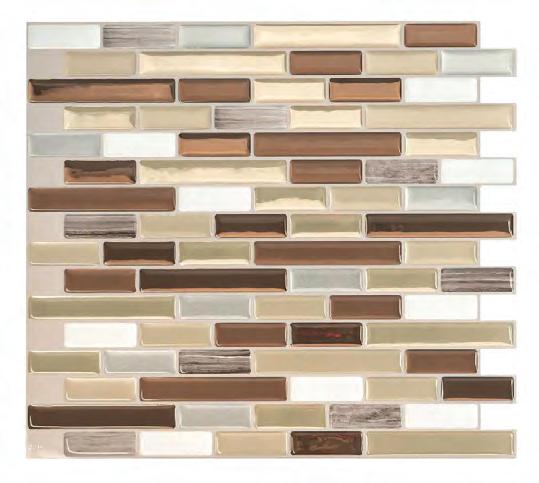
5 PRECEPT SINGLE-HANDLE COMMERCIAL KITCHEN FAUCET
MFG: Peerless WEB: www.peerlessfaucet.com INFO: Available in chrome, stainless, or matte black finishes, the Peerless brand’s new Precept Single-Handle Commercial Kitchen Faucet adds a sleek, modern touch at an affordable price. The three-function, pull-down sprayer features PowerRinse mode for extra cleaning force.
When it comes to installation, the new Precept Faucet is the easiest model the HIR team has ever worked with, which will be nice for tradesmen and DIY’ers. The integrated supply lines slip right through the faucet hole on the counter. Just finger-thread the lock-nut onto the faucet from beneath the countertop, then tighten it with a screwdriver (brilliant!) rather than a wrench. Connect the supply lines, screw on the faucet head, and you’re finished. Installing with a screwdriver is so much easier in the cramped space than using a wrench under the faucet, because you rarely have enough clearance for a full turn of the wrench handle. This new method is quicker and easier.
On the installation shown, we included a deck plate (aka escutcheon) to cover the old countertop holes from a three-hole faucet.
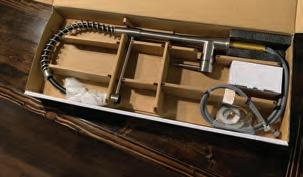
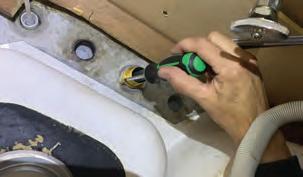

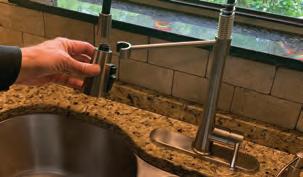
6 CORIAN SOLID SURFACE IN SEVEN NEW COLORS

MFG: Corian WEB: www.coriandesign.com INFO: Corian Design introduces seven new solid-surface colors to its interior portfolio divided into two unique collections, Carrara and Artista, and a standalone color, Sparkling Granita. The full Corian color palette now includes more than 100 colors. With its design versatility, functionality and durability, Corian Solid Surface can be fabricated with most conventional woodworking tools into virtually any design. The nonporous material is easy to clean and can be thermoformed into seamless designs so that dirt, mold and bacteria have nowhere to hide. The material is used in wall features, countertops, vanity tops, tub/shower walls, and more. Corian Solid Surface is also renewable and repairable on-site.
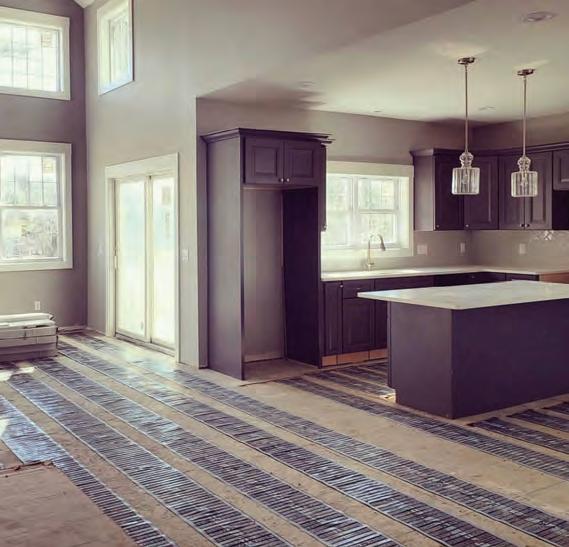
7 STEP WARMFLOOR
MFG: STEP Warmfloor WEB: www.stepheat.com INFO: STEP Warmfloor is a self-regulating heating element that can easily be installed under any flooring type, including tile, wood, stone, carpet and more. It can be installed throughout homes, garages, barns, or any other secondary property. It is a 24-volt AC/DC heating system that warms the air by heating the objects within the space from the ground up. Forced air blows dry heated air into a room only for the temperature to fluctuate when the system turns off. STEP Warmfloor is comprised of a unique heating element that decreases its electrical consumption when the ambient temperature increases. This maintains a comfortable environ-ment and makes for a system that is energy efficient and does not overheat.
8 DURASEIN
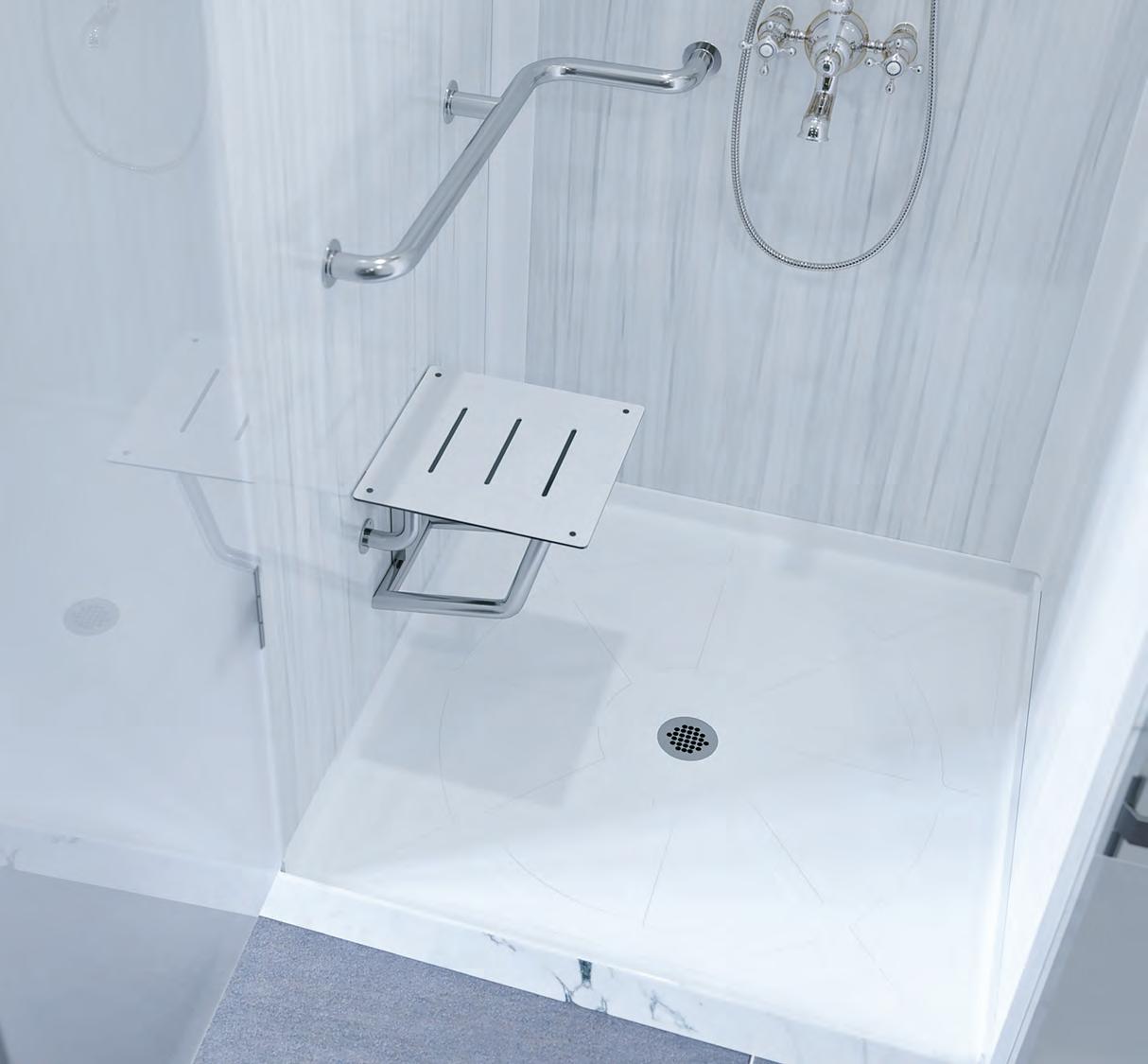
MFG: Durasein WEB: www.durasein.com INFO: Durasein solid surfacing materials are composed of two-thirds natural minerals and one third high-performance acrylic resin and pigments. Where Durasein sets itself apart from the competition is a unique color palette, customization capabilities like their multiple variable-width production lines, in-house fabrication teams, plus a crew of color designers and material scientists that assist clients in creating their own custom colors, patterns and collections. Solid surface materials are easy to clean, and stain- and chemical-resistant. Durasein is renewable, repairable, recyclable and reusable. The surface is safe for food, non-toxic, non-porous, anti-bacterial, low-VOC, mold/mildew resistant, and backed by a 10-year warranty.
9 THOR 24 INCH PROFESSIONAL ELECTRIC RANGE
MFG: THOR WEB: www.thorkitchen.com INFO: The THOR Kitchen 24 Inch Professional Electric Range is a stainless-steel machine with a smooth glass top and four heating element zones for cooking flexibility. From the 1200W single burners to a high-powered 2,200W dual heating element, it has the power to master any meal. The frameless glass top is flush with the countertop to give it a seamless look that’s easy to clean. The true convection fan blows heat from the 800W heating element for more even heating and optimum cooking and baking results. The 3.73cu.-ft. oven capacity can accommodate multiple dishes.

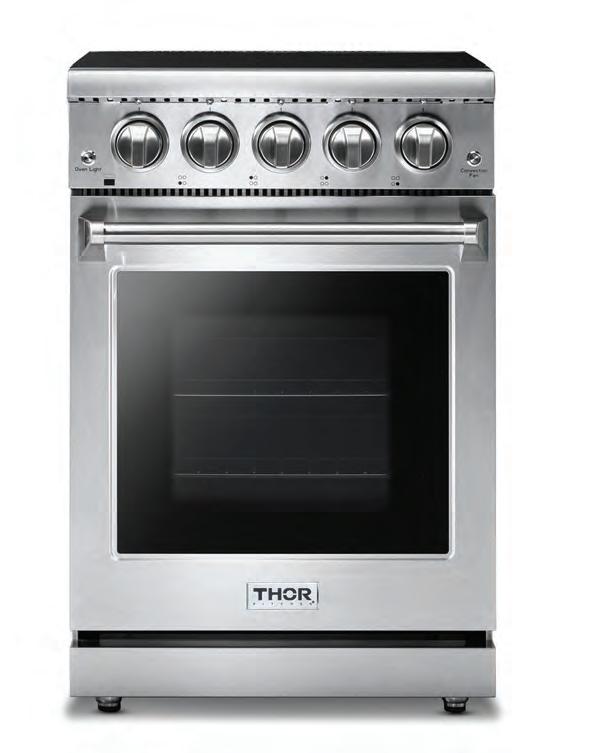
10 BATHROOM BUTLER
MFG: Bathroom Butler WEB: www.bathroombutler.com INFO: The main purpose of a heated towel rack is to dry towels, and the benefit of a dry towel is less bacterial buildup. Bathroom Butler uses only Grade 304 stainless steel, with its anti-corrosion properties that prevents rusting, peeling, chipping and staining. Whether you like the temperature of your heated towel rack hot, medium or cool, the built-in Personal Temperature Selection Switch allows you to personalize your heated towel rack by adjusting the temperature to what suits you best. You can also switch on and off as needed and reduce running costs by up to 60 percent when doing so. The racks are easy to clean; just use a warm, damp cloth. No detergent or chemicals are necessary. A Cubic 6 bar heated towel rail uses only 70 watts of electricity.


SAVE MONEY ON YOUR BATHROOM REMODELING
By Lynnet Kwamboka
The bathroom is one of the most important rooms in a home, perhaps the reason why so many homeowners consider upgrading the
bath during remodels. Such types of home makeover projects tend to dent your savings account, but you can practice several tips to save cash when remodeling the bathroom.
Your Mirror
One of the features that first meets the eye of anyone entering the bathroom is the mirror above the sink. Adding a frame is an excellent way of adding a visual appeal to the mirror. It also helps in veiling age-related wear-and-tear along the mirror's edges. Other practical ideas for upgrading your bathroom mirror include adding shelves below the mirror to increase storage space or adding subtle lighting around the window to eliminate shadow under your eyes and chin.
Retain the Plumbing Location
Using your existing plumbing system will save you a lot of cash, and your designers and builders can upgrade the bathroom without changing the conduit network. Hiring a contractor to relocate the plumbing system can cost as much as $5,000, and you can save that by simply using your existing system.
Retain the Size and Layout of the Bathroom
Changing the bathroom layout means moving some sections of the plumbing system (the toilet discharge and supply lines) and potentially require relocation of electrical work as well, all of which can expand your budget significantly. Rearranging fixtures to a different location is particularly expensive and should only be considered if necessary to suit the homeowner's needs and preferences.
Don't Bring Down Load-Bearing Walls
Load-bearing walls are built to hold the second floor and roofing in a home. Bringing down and reconstructing load-bearing walls can be an expensive affair, because the process involves temporary support of the overhead structure as well as construction of a new load-bearing header. As an alternative, try expanding your bathroom space by relocating non-load-bearing walls, such as the interior walls that run parallel to
ceiling joists. These can be removed at a pocketfriendly budget compared to their load-bearing counterparts.
Replace Your Vanity
For creative home-remodeling enthusiasts, flea markets, antique stores and resellers are an excellent source of beautiful home-improvement accessories. In that case, you can head out and shop for a standalone, rustic dresser to replace your old bathroom vanity. It's an ideal project for DIY'ers as they can easily use it for different functions: to hide their plumbing system, provide storage, and hang towel bars on the side.
Update the Toilet
If you are the budget-centric homeowner, consider replacing the lid and toilet seat instead of splurging considerable cash on the entire porcelain perch. Assuming the toilet is functional, you can refresh your bath's look without breaking the bank by simply changing the two tops.
Refinish instead of Replace
Removing and replacing your existing plumbing connections, bathtubs, and showers requires a big budget because it involves demolitions and reconstruction projects. You need to ask yourself: "Am I making these changes to improve the aesthetics or functionality of the bathroom?" For visual appeal, you can upgrade these fixtures by dressing them up instead of replacing them. Hence, refinish your tub with an eye-catching, protective coating or repaint the bathroom cabinetry rather than installing new cabinets.
Skip Floor-to-Ceiling Tiles
Tiles are an excellent home-improvement material that can enhance the look of any interior, but you should break the pattern (and monotony) by using different materials, such as reclaimed wood panels. These come in a range of textures and finishes that add warmth and rustic character while contrasting excellently with white fixtures and other minimalistic elements in the bath.
Try Installing Open Shelves
The bathroom is a private room with limited space, but installing open shelves creates a visual illusion of a much larger room in smaller square footage. Using open shelves is less costly than installing new cabinets. You can add drawers and covered baskets to store your private items and undergarments. On the flip side, you may want to show off your bathroom décor, beautiful towels, and colorful soaps in the open shelves. To add an attractive aspect to it, ensure that every item and element on each shelf is clean and well-arranged.
3 TIPS TO RENOVATE WITHOUT THE WAIT
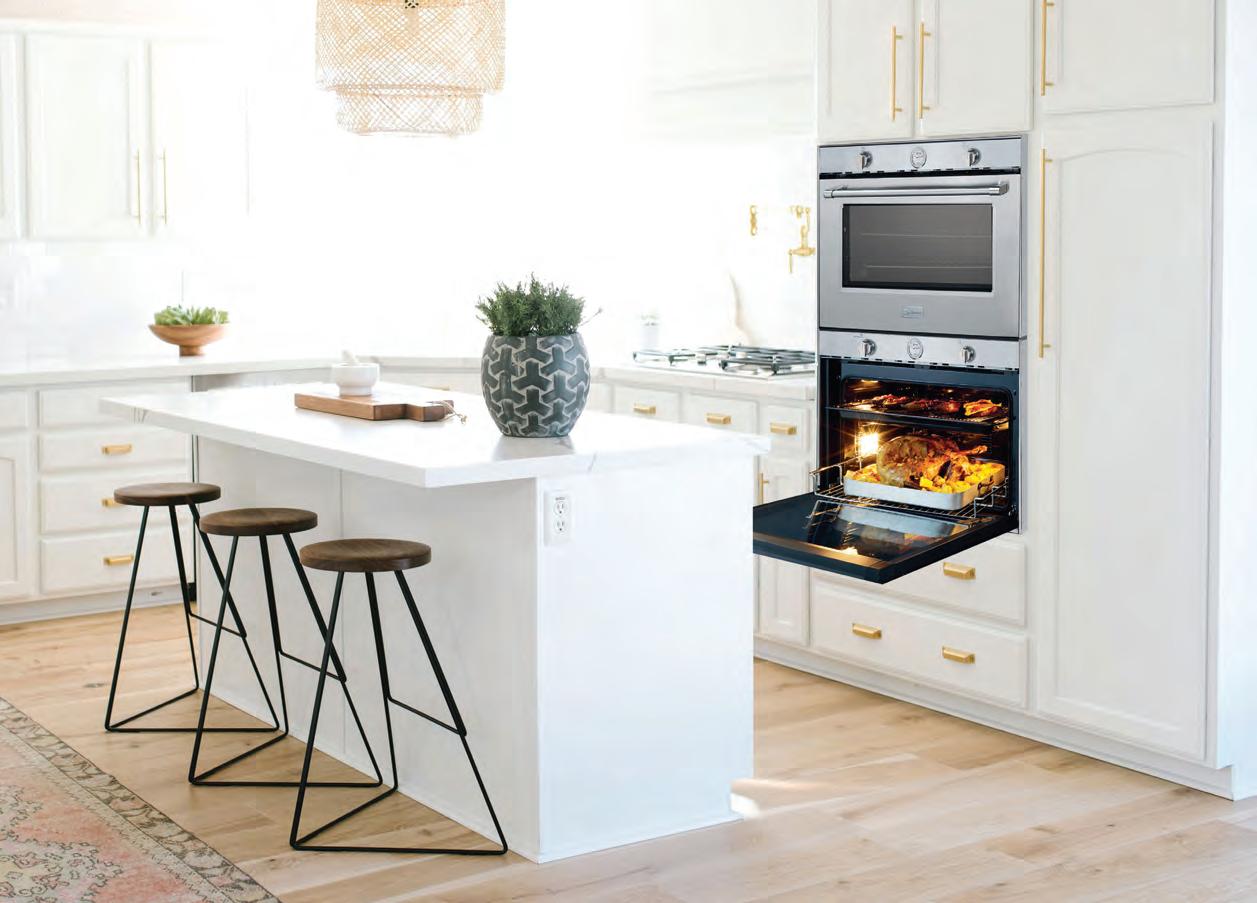
“Everything is on backorder! How can I complete my kitchen renovation?” is probably a question many home remodelers are asking these days.
Home renovation spending is up 11% this year, but factories worldwide struggle to keep up with demand due to pandemic-related supply issues. As a result of supply chain disruptions, there are significant shortages in raw materials like stainless steel, plastic, microchips and even shipping containers. Many retailers cannot keep products in stock. A six- to e ight-month backorder for product is now the norm. And, for the first time in about 30 years, appliance pricing is about to go up significantly.
Consider these tips if you don’t have weeks—or even months—to complete your project.
1. Be Flexible with the Size and Style of Product
Consumers who are flexible have a better shot of getting products and appliances in a quick timeframe.
“We recently worked with a client that was desperate for a sold-out 30-in. gas range by subbing in a 30-in. gas cooktop and wall-oven combination that fits in the same space, served the same purpose, and was in stock with no lead time,” says Melissa Haber, Vice President of EuroChef USA, importer of Verona appliances. “Alternatively, we questioned the ability to be flexible on the type of fuel connection. If an all-gas range isn’t in stock, see if there is the capability to run a 220V connection for an all-electric or a dual fuel range—and vice versa. Induction cooking is also a great alternative to traditional electric, if availability is better.”
Another consideration is to choose a neutral color like black or white, rather than stainless steel, which will pair just as well with existing appliances. This small trade-off means consumers can get cooking in their new kitchen that much sooner. “We’ve even experienced customers shaving a few inches off their planned countertop and cabinetry to fit a larger size cooktop or range just to have the product in time,” says Haber.
2. Call the Manufacturer Directly to Check Inventory and Lead Times
“At Verona, we’ll take calls directly from consumers and help them locate product at their favorite e-tailer or local dealer,” says Haber. “It’s important to communicate directly with vendors and partners who have the most current information and are willing to assist you in accurately planning your project lead times.”
3. Be Flexible in Your Brand Choice
Don’t be tied to matching brands, because that’s when consumers wind up waiting eight months for appliances because a matching fridge hasn’t arrived. Consider mixing brands—most stainless steel or even colored appliances will coordinate with each other, regardless of the manufacturer.
“Don’t insist on the brand your neighbor bought that doesn’t have product in stock. Instead consider other brands that offer quality, performance and availability,” says Haber. “Customers willing to be flexible will probably end up paying less while still getting a feature-rich and equally reliable appliance at the end of the day. And, one that’s in stock when and where you need it.”
HOW HANDY ARE AMERICANS?
Although the experience of buying and own-
ing a home is different for everyone, there’s one thing we can all agree on: It’s important to know how to do some basic home-improvement yourself.
HomeAdvisor recently surveyed homeowners across the country to see how well-versed they are in tasks like draining a water heater and mounting a television. The truth is, many homeowners don’t have a clue about how to fix household issues themselves, even if it’s something as simple as restoring power after blowing a fuse.
Key takeaways:
• Millennials think they’re the handiest generation, yet 1 in 4 won't change a lightbulb again.
• Men are more likely to give up on a project than women
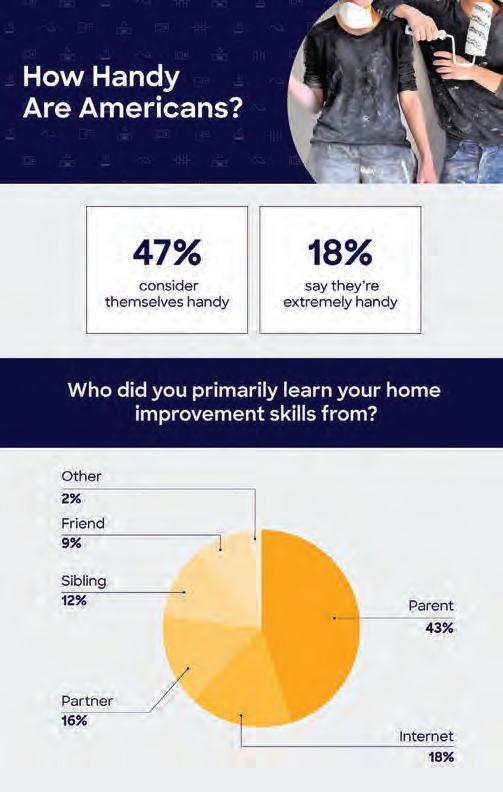
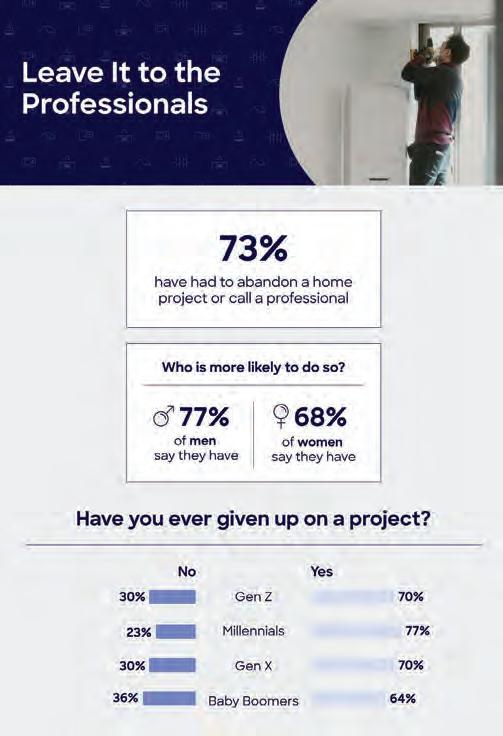
• Millennials were the most likely to abandon a project or call a professional (77%), while baby boomers (63%) were least likely.
Americans consider themselves pretty handy. Of those surveyed, 18% reported that they were extremely handy. On average, Americans gave themselves a 3.7 out of 5 handiness rating, with men (3.8) considering themselves to be slightly handier than women (3.6).
Millennials think they’re the handiest generation, checking in at 3.8, while baby boomers think they’re the least at 3.5.
Most respondents (43%) picked up their homeimprovement knowledge from their parents. The internet was a distant second at 18%, followed by their partners at 16%. Others looked for help elsewhere, including how-to books, trial and error, and even their first boss.
Even when Americans don’t consider themselves handy, it doesn’t stop them from trying and succeeding: 85% said they enjoy doing home improvement projects, and more than one in four have never had to abandon a project or ask for professional help.
Moreover, nine in 10 say they’re comfortable in home-improvement stores.
Quitters Never Win
Despite the confidence level of survey respondents, they were willing to admit there were times when DIY tasks got the better of them. In fact, nearly three in four said they’ve had to either abandon a project or call in a local handyperson.
Men are more likely to throw in the towel than women (77% vs. 68%, respectively). Millennials were the age group most likely to give up.
Comfort Zone
People are most likely to unclog a drain or assemble a piece of furniture themselves, according to the results. However, they’re likely to hand off projects that require a bit more work, like mowing the lawn or mounting a TV on the wall. Respondents were likely to leave the more difficult jobs to professionals: installing wood floors, replacing an entire toilet, and retiling a shower.
You can read the full report, “Survey Reveals How Handy Americans Really Are,” at homeadvisor.com.
NEWSWIRE
GIG ECONOMY FOR CONSTRUCTION INDUSTRY
Houzework.com, a new Atlanta-based service intends to revitalize the gig economy by providing thousands of new jobs in house maintenance, renovation and home improvement. Houzework is a new marketplace developed by Mustard Grain Projects that is designed to connect homeowners, landlords and tenants with perfectly qualified professionals to work on their home-improvement projects. Through Houzework, registered users can post jobs or invite freelancers to work on their houses or buildings. They can also post their jobs with a location map, ensuring they find the best local professionals for convenient, high-quality house repairs, home remodeling or cleaning. From swimming pool services to pest control, Houzework aims to provide a comprehensive database of specialists where workers can bid on posted jobs so users can choose the right individual or team for the project.

LL FLOORING PARTNERS WITH NFCAP TO HELP BUILD THE FUTURE OF FLOORING
LL Flooring, formerly Lumber Liquidators, announced a partnership with the National Flooring Contractors Apprenticeship Program (NFCAP), in efforts to lend its resources and professional networks to help address the future need for flooring contractors and advance the profession. As the first national retailer to partner with the apprenticeship program, LL Flooring will connect NFCAP apprentices across the country with participating flooring contractors who will mentor the industry’s next generation of professional installers. LL will also be donating product, providing access to its website and marketing channels, advising on the curriculum, and providing direct financial support to grow the program.
ASK MATT

QUESTION: Should a DIY’er begin learning with MIG or TIG welding?
ANSWER: Most professionals consider TIG (tungsten inert gas) to be the “elite” of all welding processes, because a TIG weld is typically stronger, neater, and easier to control than with other processes. However, a TIG unit can be the most expensive of all welders, so a DIY’er should consider how much they’ll be using the machine before investing. Although a TIG setup works with a torch (electrode) to melt a welding rod with pinpoint accuracy, MIG (metal inert gas) welds utilize a wire-feed system. These machines are easy to learn but hard to master. For $300, a DIY’er can pick up a MIG welder from the home center, plug into a 110-volt outlet and begin welding immediately. These are great for building a grill or shop equipment. The MIG gun feeds flux-cored welding wire into the weld, and the weld begins as soon as you squeeze the trigger. However, all the smoke and sparks impede visibility and can make it difficult to achieve a truly clean weld.
QUESTION: The upstairs bathtub is leaking, but I can’t find the exact source of the problem. I’ve replaced the faucet valves and the shower diverter, and I’ve sealed and tightened all the plumbing connections. Yet, when someone takes a shower, water still leaks onto the ceiling below. Where could the leak be coming from?
ANSWER: It sounds like you have a bath/shower combo, and if you’ve ruled out everything else, you should inspect the bathtub overflow drain. The overflow drain is usually sealed with a foam rubber gasket which can deteriorate over time. Once the gasket fails, a significant amount of water can pass through the opening. Replacing an overflow drain gasket is a fairly easy fix. First, remove the screws that mount the cover plate. Pull out the lever assembly, including the drain plug. Remove the old gasket material from the tub and the body of the overflow drain. You’ll need to replace it with an “overflow washer” or “overflow gasket” from the hardware store. The gasket is beveled, so orient it with the thickest side down when installing it. Lubricate the gasket with a little plumber’s silicone grease and work it into place around the mouth of the overflow body. The overflow pipe will have a little play which should allow you to adjust its position and make room for the gasket. Make sure it seats evenly for a complete seal around the connection. Replace the drain assembly and fasten the plate with the two mounting screws to finish the job.
Need more info? Visit Matt’s blog at HomeImprovementAndRepairs.com.
H
